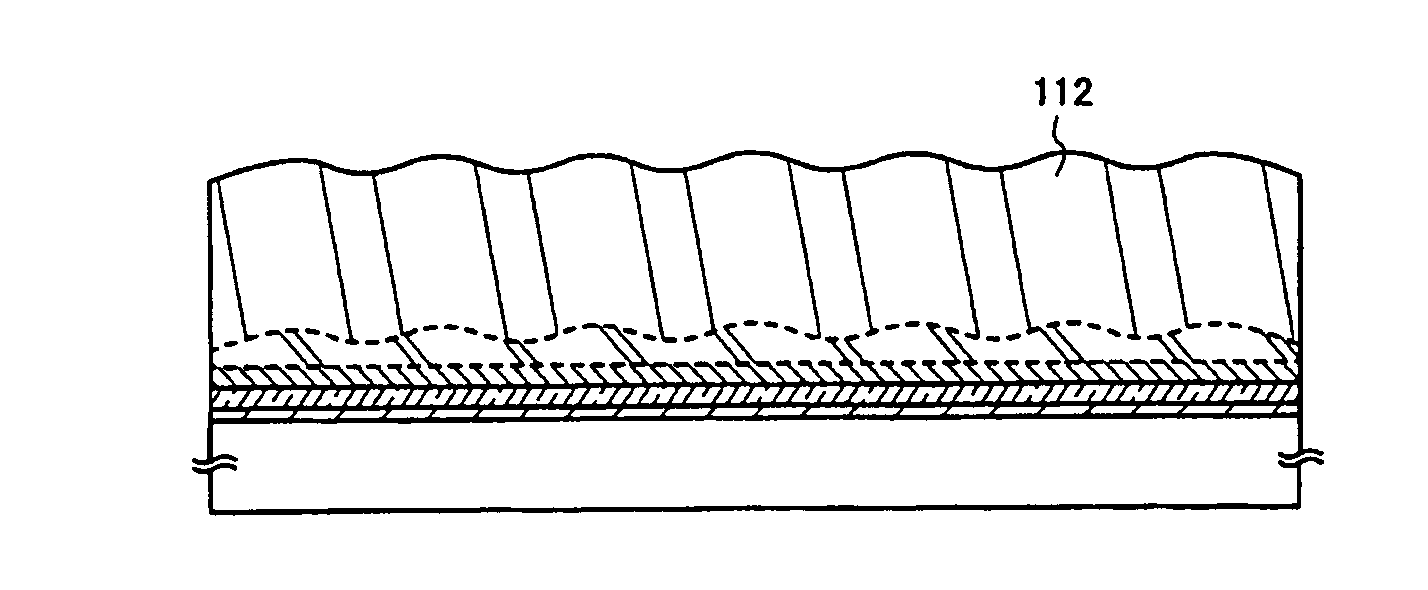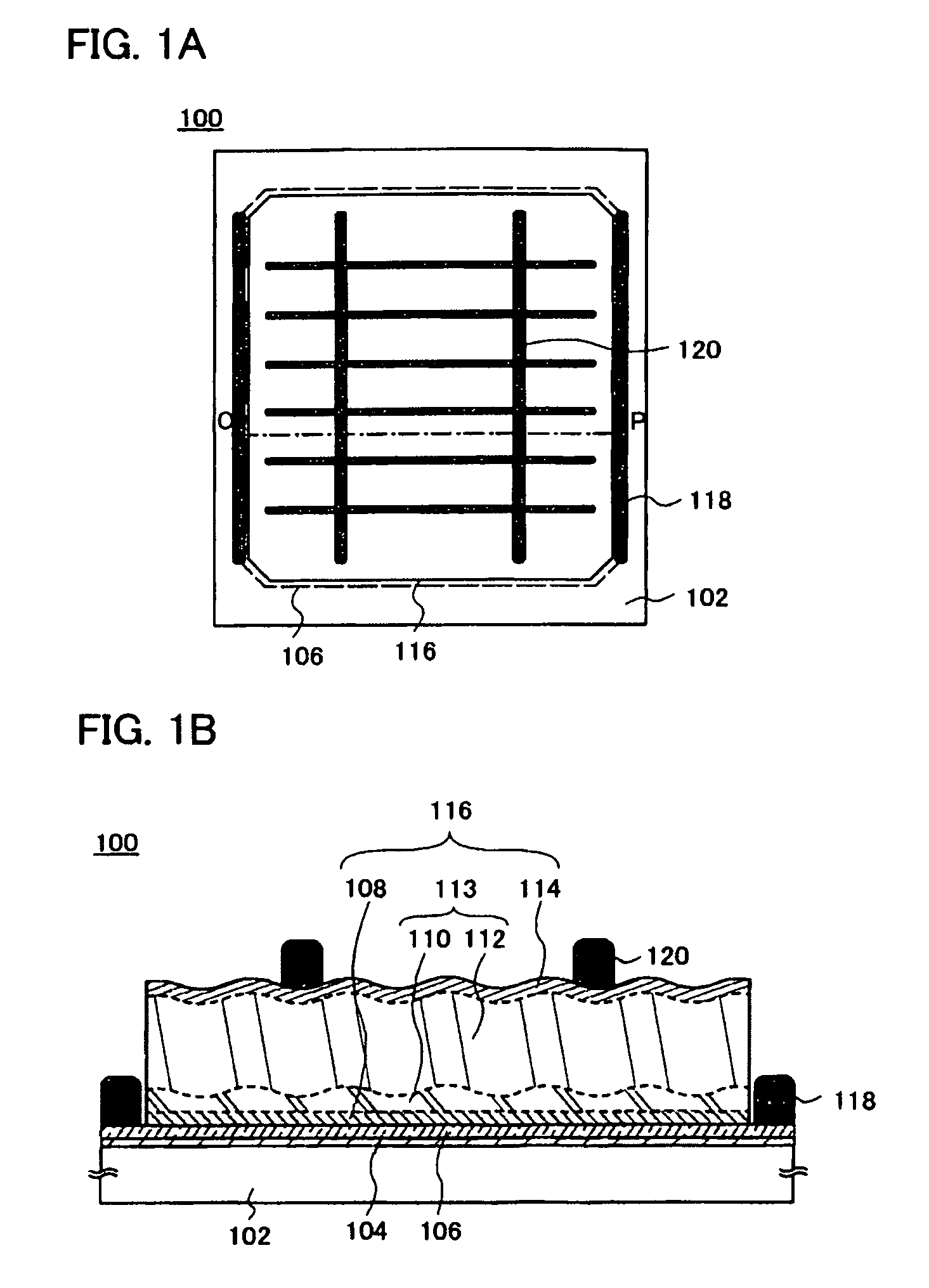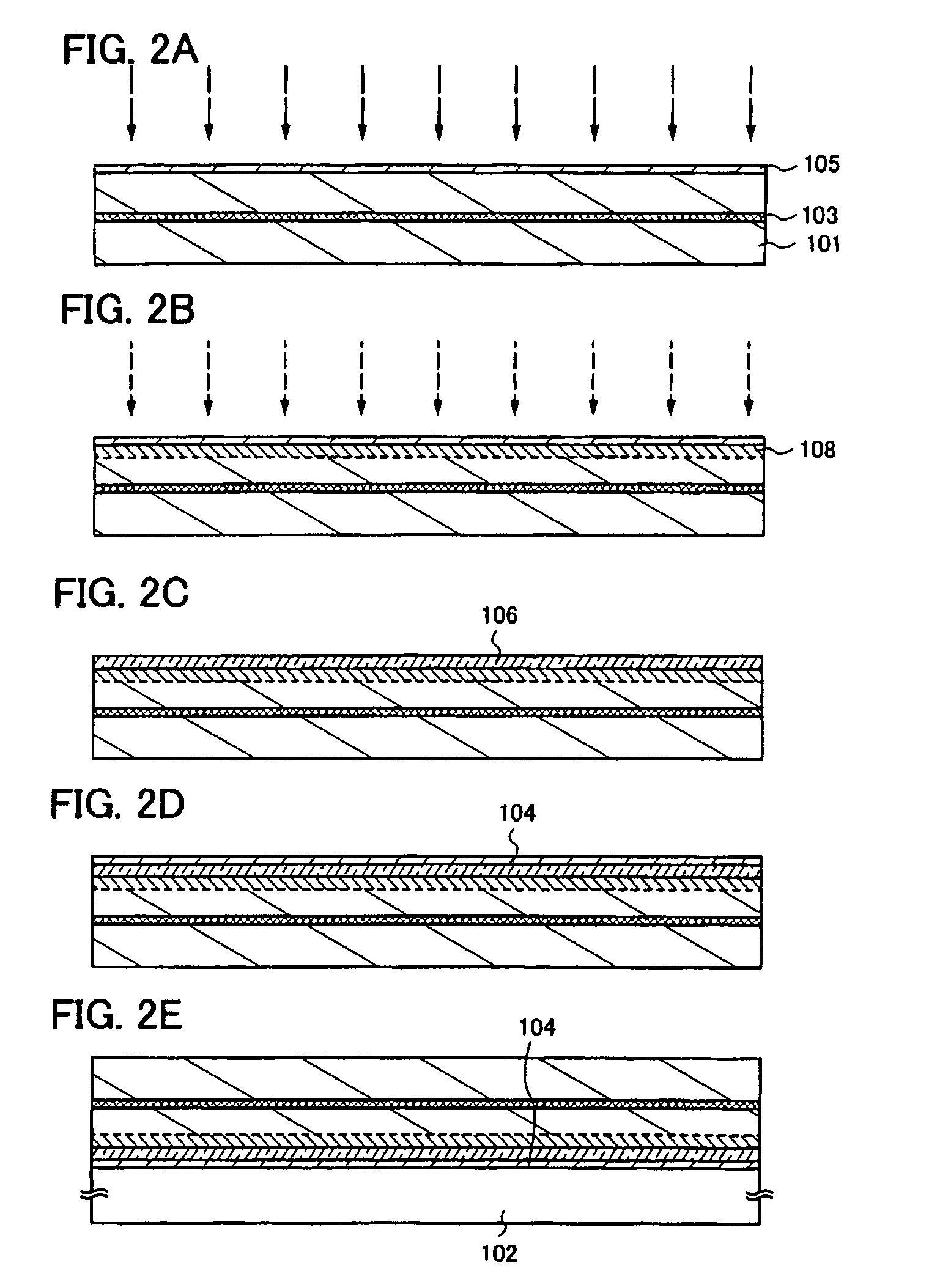Method for manufacturing photoelectric conversion device
a photoelectric conversion and manufacturing method technology, applied in the field of photoelectric conversion devices, can solve the problems of inability to form favorable single crystal silicon layer, inability to prevent crystal defect generation in hydrogen ion implantation process or separation process, and inability to prevent epitaxial growth. good, the effect of reducing resource consumption
- Summary
- Abstract
- Description
- Claims
- Application Information
AI Technical Summary
Benefits of technology
Problems solved by technology
Method used
Image
Examples
embodiment mode 1
[0049]FIG. 1A is a schematic top diagram and FIG. 1B is a schematic cross-sectional diagram of a photoelectric conversion device 100 according to the present invention. Note that FIG. 1B is an example of a cross-sectional view along line O-P in FIG. 1A.
[0050]The photoelectric conversion device 100 described in this embodiment mode includes a unit cell 116 having a single crystal silicon layer over the supporting substrate 102. The unit cell 116 is provided with a first electrode 106 on the supporting substrate 102 side and with a second electrode 120 on an opposite surface from the supporting substrate 102 side. The unit cell 116 is sandwiched between the first electrode 106 and the second electrode 120. In addition, an insulating layer 104 is provided between the supporting substrate 102 and the unit cell 116. The first electrode 106 is provided between the unit cell 116 and the insulating layer 104. The second electrode 120 is provided on the opposite surface of the unit cell 116 ...
embodiment mode 2
[0155]In this embodiment mode, a method for manufacturing a photoelectric conversion device which is different from the method described in the above embodiment mode is described. In the above embodiment mode, an example is given in which crystal defects in the first single crystal silicon layer 110 which is formed of a slice of the single crystal silicon substrate 101 are repaired by laser treatment. In this embodiment mode, a method is described in which a surface of the first single crystal silicon layer 110 is removed to reduce crystal defects. Note that other structures are based on the description in the above embodiment mode and the description thereof is omitted here.
[0156]By performing etching treatment or polishing treatment on a surface which is the separation plane of the first single crystal silicon layer 110, which is a thin slice of the single crystal silicon substrate 101, crystal defects of the surface which is the separation plane can be eliminated.
[0157]For exampl...
embodiment mode 3
[0161]In this embodiment mode, a method for manufacturing a photoelectric conversion device which is different from the methods described in the above embodiment modes is described with reference to FIGS. 10A to 10D, FIGS. 11A to 11D, and FIGS. 12A to 12D. In specific, a method for forming the fragile layer 103 and the first impurity silicon layer 108 in the single crystal silicon substrate 101, and forming the first electrode 106, and the insulating layer 104 over the single crystal silicon substrate 101 is described. Note that other structures are based on the description in the above embodiment modes and the description thereof is omitted here.
[0162]In the above embodiment mode, the example (1) is described as the formation order of the fragile layer 103, the first impurity silicon layer 108, the first electrode 106, and the insulating layer 104. In this embodiment mode, the examples (2) to (4) are described.
[0163]For example, as illustrated in FIGS. 10A to 10D, the protection la...
PUM
| Property | Measurement | Unit |
|---|---|---|
| atmospheric pressure | aaaaa | aaaaa |
| atmospheric pressure | aaaaa | aaaaa |
| thickness | aaaaa | aaaaa |
Abstract
Description
Claims
Application Information
 Login to View More
Login to View More - R&D
- Intellectual Property
- Life Sciences
- Materials
- Tech Scout
- Unparalleled Data Quality
- Higher Quality Content
- 60% Fewer Hallucinations
Browse by: Latest US Patents, China's latest patents, Technical Efficacy Thesaurus, Application Domain, Technology Topic, Popular Technical Reports.
© 2025 PatSnap. All rights reserved.Legal|Privacy policy|Modern Slavery Act Transparency Statement|Sitemap|About US| Contact US: help@patsnap.com



